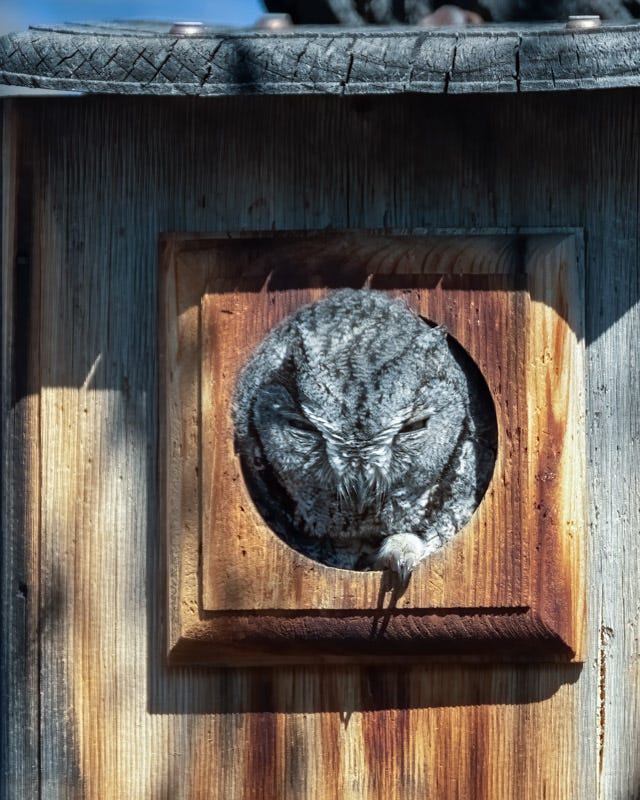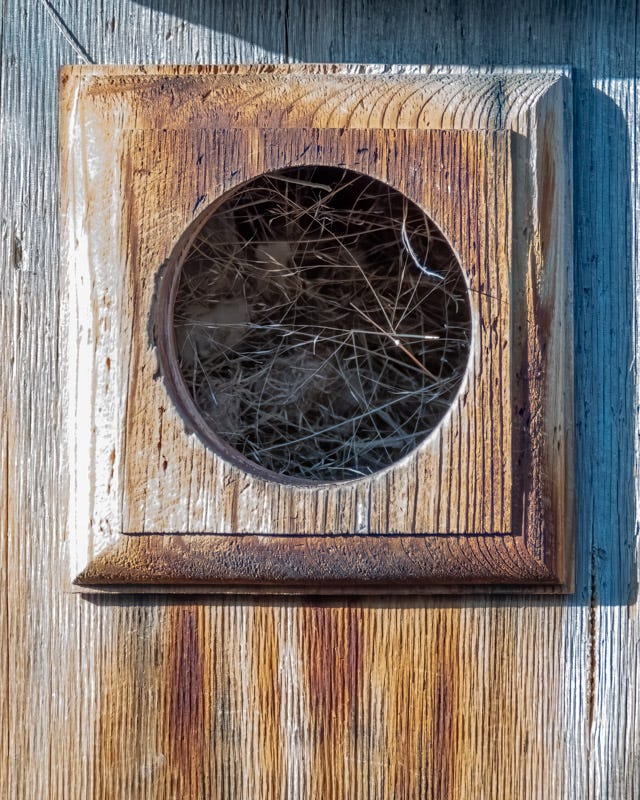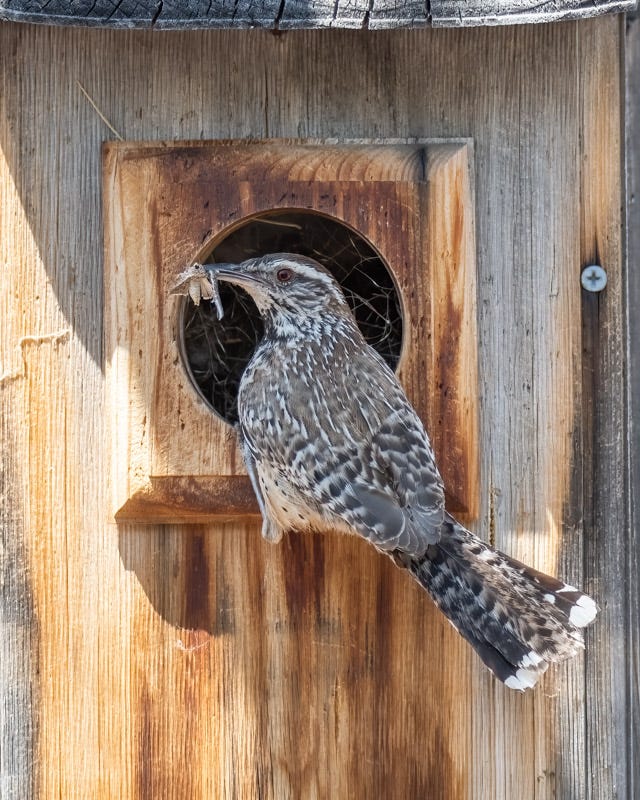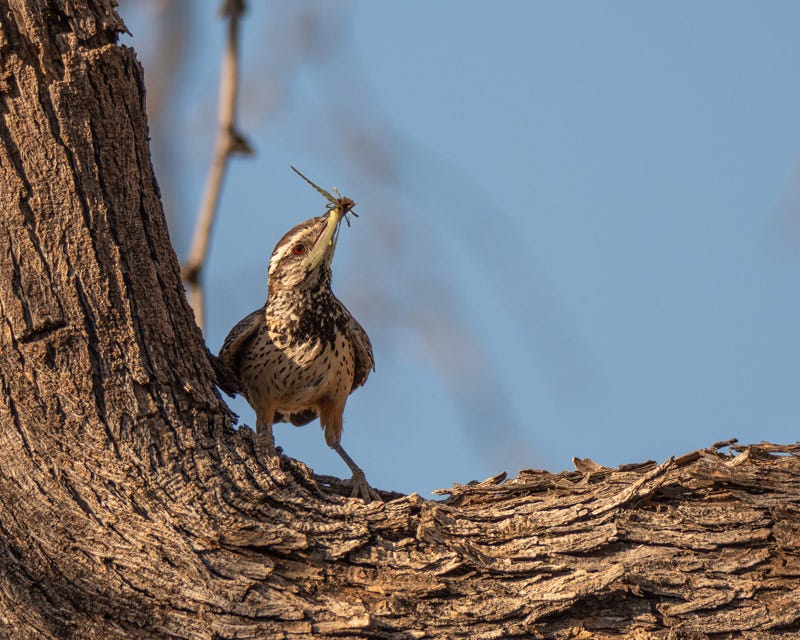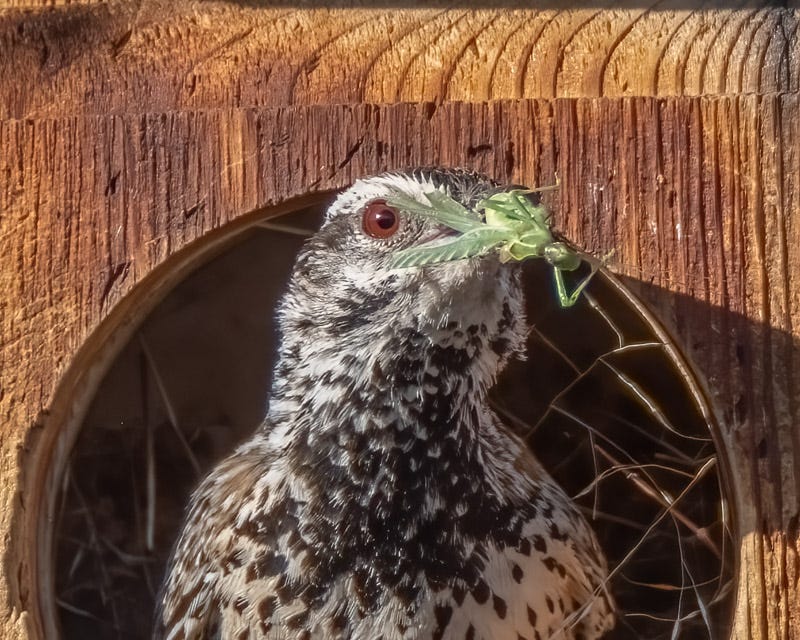A Cactus Wren in a Nest Box
I thought they only built nests in cholla cactus!!
For several years in a row I had a Western Screech Owl family using my backyard nest box to raise a family. One spring, cable contractors spent a day jack-hammering rocks right beneath the nest and installing cable for my new neighbors. The owls left that night and didn't return. That winter, I would occasionally see an owl in the box and was very hopeful for a return that spring.
But spring came and went and no owls returned. By May I was resigned to not having any birds in that box but then I noticed some debris in the opening to the box. Over a few weeks I noticed that the debris accumulated and I wondered what was happening.
Finally, one afternoon I decided to park myself in a chair, stare at the nest box and wait. Shortly I was rewarded with this sight:
The grasses and debris showing in the box was the opening to a Cactus Wren nest. I had never heard of Cactus Wrens using nest boxes or any other cavity, but it sure was happening this time. After entering the box to feed young, the Cactus Wren exited with what seems to be fecal matter. The Wren was cleaning out the nest at the same time it was feeding its young.
I spent a long time at the box and watched as the very active parent(s) returned over and over again with insects for their young.
Each time the adults returned with food, they would land on a thick branch of the tree to the side of the nest box. Very quickly they would dart into the box and then fly out to hunt again.
For a while, the food consisted of one Creosote Bush Katydid after another. The photo below was taken just five minutes after the photo above. In each instance, the Cactus Wren landed in almost the exact same spot, with the exact same species of insect!
Somewhere nearby was a creosote bush loaded with Katydids.
They did continue to return often with a variety of insects.
After a while I was satisfied that I had witnessed something very special and left the Cactus Wren family alone.
Cornell's "All About Birds" website describes the Cactus Wren nest as: "The female initiates nest building, but after she selects the spot, the male jumps in to help out. They build the nest 3–10 feet above the ground in a cholla, palo verde, acacia, mesquite, or other desert vegetation where the nest is surrounded by thorns." Cornell does not list "wooden screech owl nest boxes" as a possible site for a Cactus Wren nest, but this is just another example of the adaptability of birds to their ever changing environments.


